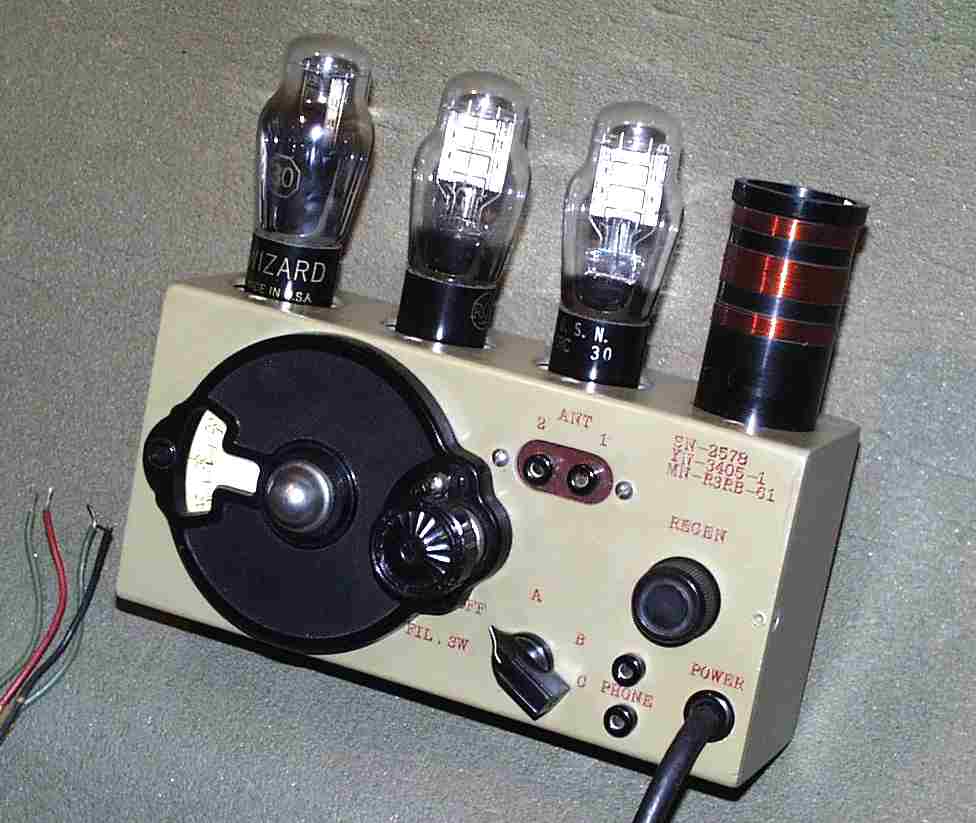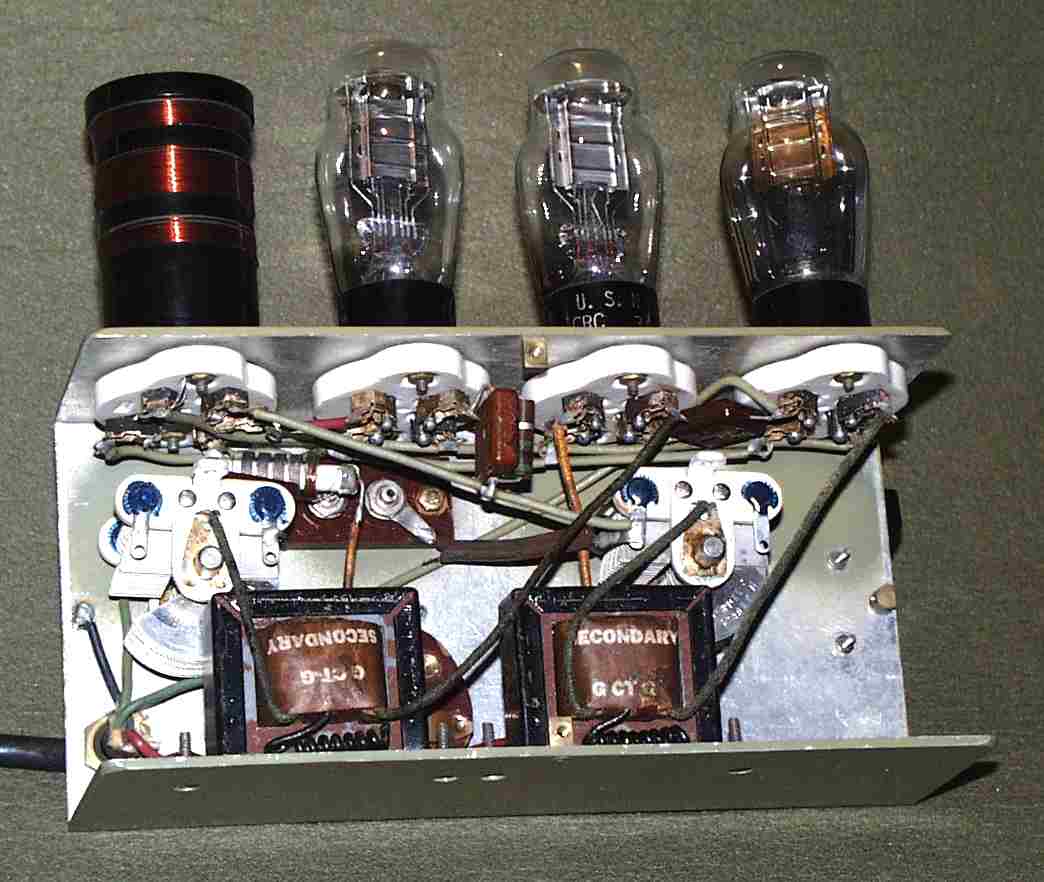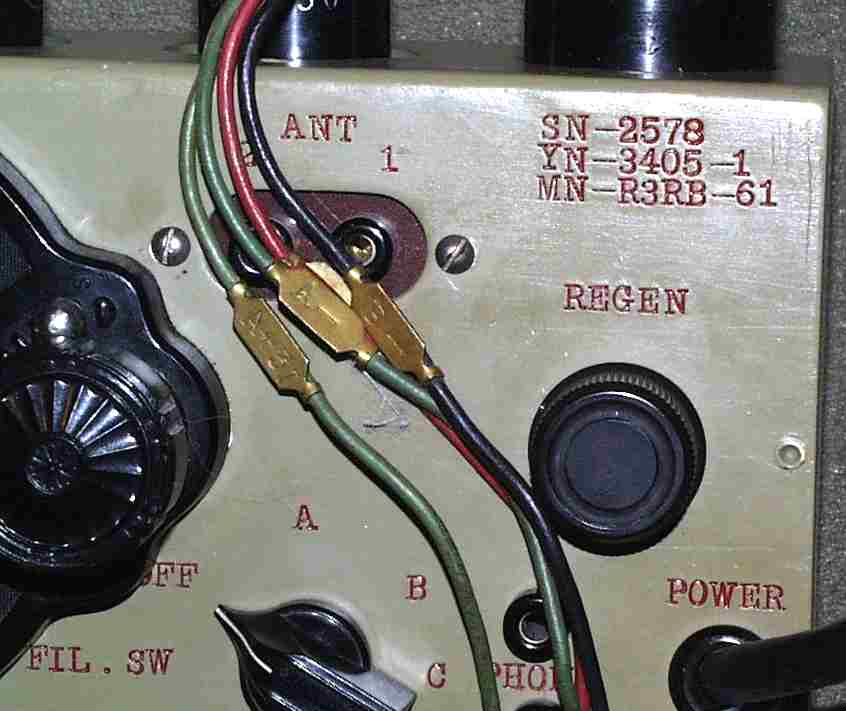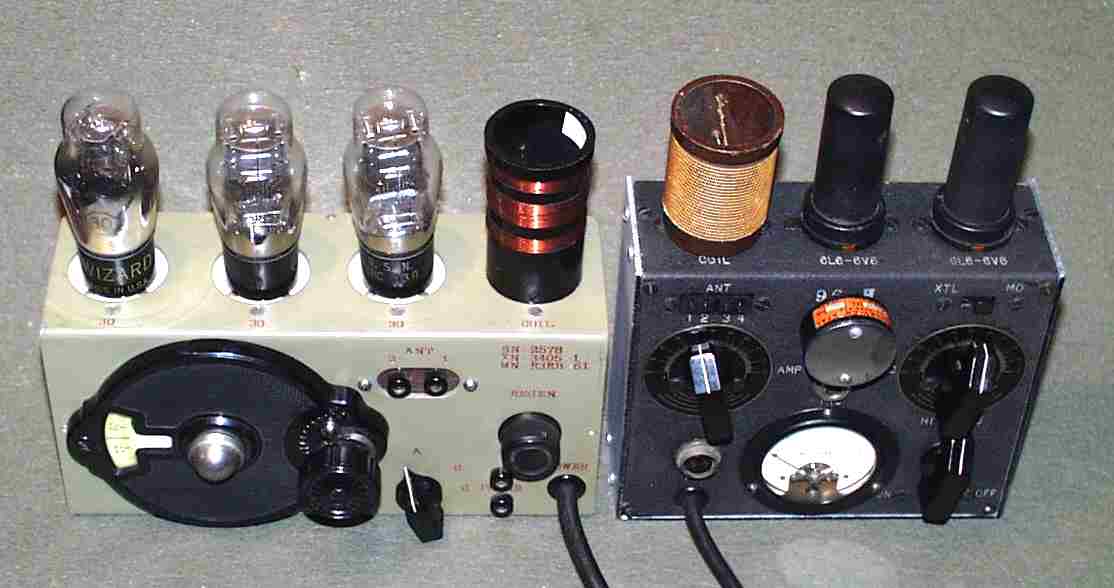| This radio came
from the
estate of an AT&T engineer. It's a regenerative
detector
followed by two transformer-coupled audio stages. The tubes
are
type 30's and the five-pin plug-in coil covers 2.5 to 5 MHz.
The
coil form has a machined slot for each winding. |
 |
| Everything about
this set is
professional. Top quality components, careful assembly, and good
sheetmetal suggest it's not homebrew or a one-off. The
filament
switch places resistors between the 3-volt A battery and the 2-volt
filaments. |
 |
| The panel is
engraved, and
the battery wires are carefully identified. There is a serial
number and other cryptic data, but no indication of
manufacturer.
Yes, the sideways National dial is original. There's paint
inside
it's mounting holes. Please let me know if you have any information. |
 |
|
Idle Speculation:
 This radio reminds me a lot of the CMS. Compare it's physical layout to the CMS transmitter above. While the CMS receiver has internal tubes and band-switched coils, it uses triode-connected 3S4 tubes, a reasonable equivalent to the 30's. Both sets have two banana-jack antenna terminals. Terminal 1 is connected to a primary winding on the coil, and terminal 2 is connected to the detector grid via a gimmick capacitor. Both receivers are simple regen's followed by two audio stages, so the fact that the two circuits are nearly identical may only be a coincidence. I consulted with the gentlemen on the Boatanchors and Milsurplus email reflectors, hoping someone could identify this radio. There's been no ID, but there were a number of useful observations: A number of people suggested it was a well-done homebrew or even a kit. There's too many expensive components for a kit, and while it could be homebrew or a factory G-job (Government jobs took priority. (-: ), it looks and feels like a model-shop piece to me. One person pointed out that the greenish gray paint looks like a phone-company color. WB4UIV points out, "The front panel is stamped with metal stamps hit with a hammer. The lettering is not absolutely straight." He further suggests that "MN-R3RB-61" might be a Model Number indicating a 3 tube Regen, and "YN-3405-1" might be a date code. 1934 seems a little early. The resistors seem newer. Does anyone know the introduction date for the Stancor A-63-C transformers? Hue Miller's conjectures: "Actually i think the fellow who said shop-model or shop built was likely correct, no homebrew or kit would have a stamped serial number. YN= "year number", i.e. date code MN= "model number" or what the radio was named Designed to fit in a small case, or else power lead would have come out the back., and also to be transported "knocked down" or with tubes and coil removed, else there would have been a front panel screening tubes and coil from the operator. Otherwise, for not - miniaturized receivers, not having a front panel is poor building practice, and the builder of this receiver surely knew that. Prototype or demonstration model or limited production for what purpose, though?" I concur with Hue's observations. With the tubes and coil removed, the radio takes on the "loaf-of-bread" form factor of an agent set. That's so you can carry it around in the shopping basket. So, is it possible that this was a developmental set that was the daddy of the CMS? Even if we knew that for sure, we still don't know the whys and wherefores of the CMS. I guess the whole thing will remain a riddle inside a mystery wrapped in an enigma. (With apologies to Winston Churchill.) |